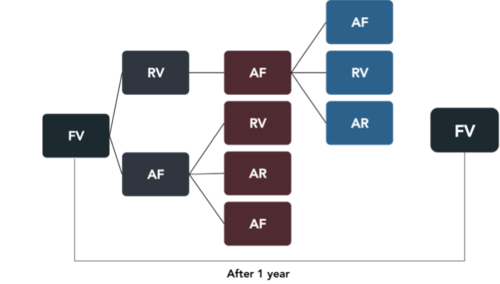Final Progress
| Mid-Term Progress
|
Final Progressnew! |
| No | Document |
|---|---|
| 01 | Final Conference Paper |
| 02 | Final Presentation Slides |
| 03 | Final Poster |
An excerpt from the Final Conference Paper is shown below. For more information on the analysis, please download the paper or contact the team.
The healthcare industry has always been concerned with gathering insights on patients and their no-show appointments. The number of no-show appointments has an impact on the cost and clinic utilization. It creates an opportunity cost for another patient who is unable to make use of the no-show appointment slot to get a consultation from a doctor or an allied health professional. In this study, we aim to identify significant variables that affect no-show appointments in Hospital X. The data used for this model building process is provided to us by our sponsor, a medical consultant at Hospital X. Taking references from past literature review, we will select and derive relevant variables to be used for modelling. We will develop logistic regression and decision tree models to predict the probability of no-shows for Hospital X using both patient information and individual clinical appointment attendance records. We will then compare the different models and assess the results.
Based on our findings, we will end the report with set of implications and results for Hospital X.
With regards to the state of mental health disorders in children, there has been an increase of cases from 533 in 1980 to 3051 in 2010. A medical study (Woo, et al, 2007) has shown that one in eight children in Singapore has emotional disorders, and one in 20 has behavioural disorders, only 10% ever see a psychiatrist. Thus, it places an emphasis in understanding no- show appointments. Appointments are made for a reason. When patients default on their appointments, they miss the opportunity for a medical consultation and thus, place their health status at risk.
No-show appointment is defined as when a patient does not attend for a scheduled clinic appointment or cancels with such minimal lead time that the slot cannot be filled (Huang & Hanauer, 2014). The impact of no-show appointments includes disruption of efficient operations of the clinics, provider productivity, decreased access to care and depriving other patients of the opportunity to see a medical professional during no-show appointments.
Hospital X is a pioneer tertiary hospital that provides a comprehensive range of medical and rehabilitative services for children, adolescents, adults and the elderly. Patients are usually referred to Hospital X by other medical institutions or they booked an appointment directly. Patients can be categorised according to their appointments with a doctor, an allied health professional or even both.
A patient’s first appointment begins with a diagnosis by a doctor and subsequent appointments are made according to the patient’s mental health status. If a patient does not have any appointment for a year, any subsequent appointment will have to be diagnosed by a doctor again (FV).
Our project sponsor is a medical consultant working for Hospital X. He specialises in tending to younger patients from the age of 18 years old and below. He hopes to tap into the under-utilised administrative data that is collected by the hospital daily.
According to our project sponsor, Hospital X experiences high no-show appointments rate of about 21% for first visits and 19% for review visits. Our project sponsor is keen on improving the access to care as missed appointments lead to longer appointment lead times, idle time and an overall reduced quality of care.
This paper seeks to explore the no-show patterns of the patients’ appointments in Hospital X from 2015 to 2016.
